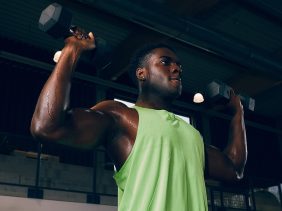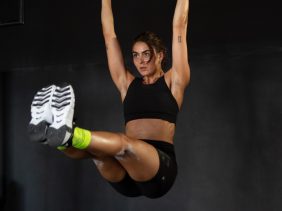The Best Eccentric Exercises You Can Do — And Trust Us, You Should be Doing This
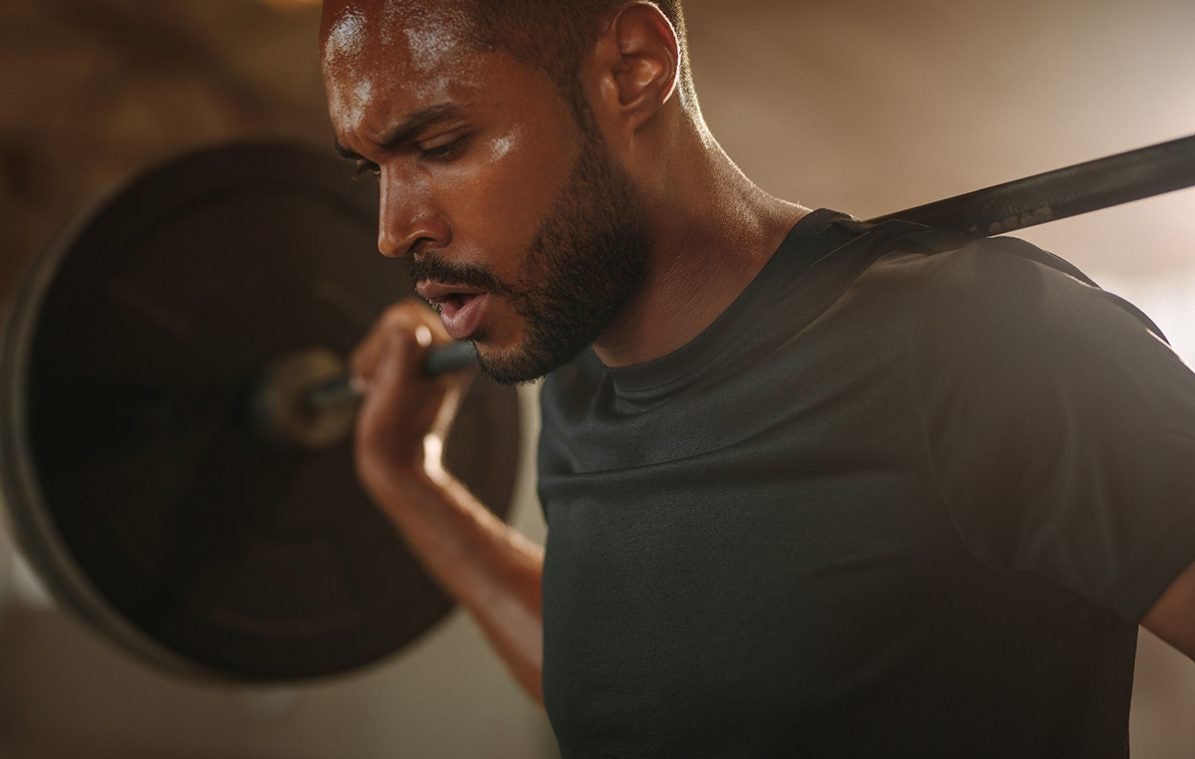 ©Jacoblund
©Jacoblund
Faster muscle growth, more strength, less risk of injury during a workout:
eccentric exercises can take your workout to a whole new level. Anyone who regularly incorporates negative repetitions into their workout can reap the benefits relatively quickly. We explain which exercises you definitely should not be missing.
If you want to further support your body during training, our BCAA capsules provide high-quality essential amino acids. You can simply take them before training and rock your workout!
Eccentric training can improve muscle performance and strength. But how exactly do you incorporate this type of strength training into your workouts? That’s pretty easy because you simply focus on the movement phase in your usual exercises where you “return” the weight to where it started. You can either have a training partner help you push the weight up, or you can do the exercise on your own. It’s important to perform the returning movement more slowly than the pressing or pushing movement preceding it.
This negative repetition puts the muscle under tension for longer and stretches it. It also activates muscle stimuli that lead to rapid muscle growth.
The Best Eccentric Training Exercises
If you want to take your workout to the next level, then we’ll tell you which eccentric exercises you should definitely include in your workout — for guaranteed additional muscle power.
By the way, you should only utilize eccentric exercises once a week to train each muscle. Ultimately, negative training is extremely demanding for your muscles. If you’re not focused on pure eccentric training, on the other hand, then you can of course add more sessions each week. For eccentric training, six to eight repetitions per exercise are sufficient. The concentric phase should last one to two seconds and the eccentric phase three seconds.
Generally speaking, almost all of your usual gym exercises can also be performed eccentrically, so we’ll introduce you to the most efficient ones.
#1 Negative Pull-Ups or Chin-Ups
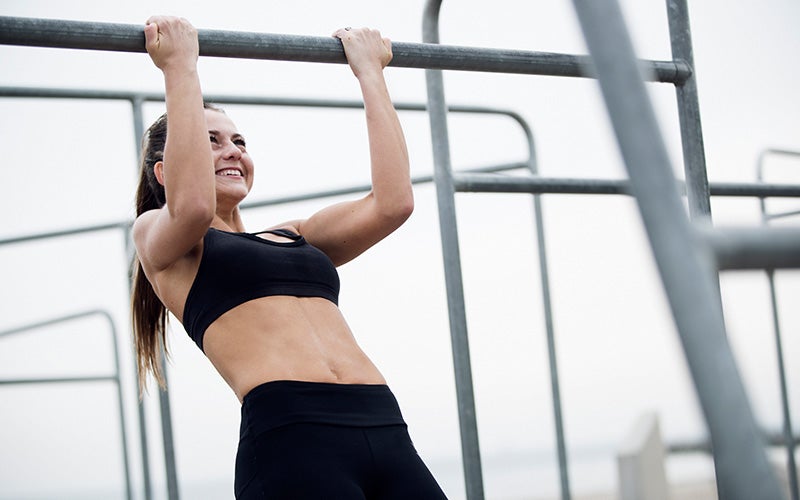
Normal pull-ups involve a typical pulling up and lowering movement, which means you’ll definitely be doing them frequently in the gym. With negative pull-ups, however, the focus is on lowering yourself, not on pulling up.
Here’s how it works:
- Instead of starting on the floor, begin with the second part of the pull-up movement, where your chin is above the bar and your arms are bent. To get into this position, you can either get help from a training partner or hang from the pull-up bar using a chair.
- Now slowly lower yourself toward the floor until your arms are fully extended.
Muscles: This exercise targets the biceps, triceps, deltoids, latissimus and trapezius muscles. If normal pull-ups are still difficult for you, you can increase your power and achieve faster results with negative pull-ups.
Remember: If you still don’t feel quite confident with the pull-up workout, you can use a Theraband for support. Tie the band to the bar and place the middle of your foot in the loop. The band can help you with both controlled downward movements and pulling up.
#2 Nordic Hamstring Curl
Injuries to the hamstring muscles are among the most common training injuries. It’s no wonder considering that the hamstrings are involved in a large number of movements. And not only during sports either — you also need them for everyday movements such as bending down or climbing stairs. They support you in strength training: for example, when you’re doing deadlifts, squats or lunges. All the more reason to train the hamstrings properly and protect them from injuries. This eccentric training exercise can be very helpful in achieving this goal.
- For the Nordic hamstring curl, start by kneeling on an exercise mat with your back straight.
- Place your feet under a stationary object – or you can ask a training partner to hold your feet from behind, of course.
- Now slowly lean your upper body forward until your hands reach the mat, then support yourself by placing your hands on the floor.
- As you execute the movement, keep your abs and glutes tensed and your back straight. Then return to the starting position with a bit of momentum by pushing off the ground with the palms of your hands.
Muscles: This exercise targets your hamstrings.
Remember: The further your upper body tilts toward the ground, the harder it becomes to maintain tension. It makes sense to have a training partner who can help you, especially if you’re a beginner – you don’t want to lean forward too quickly and hit the ground. You should also keep your arms ready to catch yourself.
#3 Push-Up
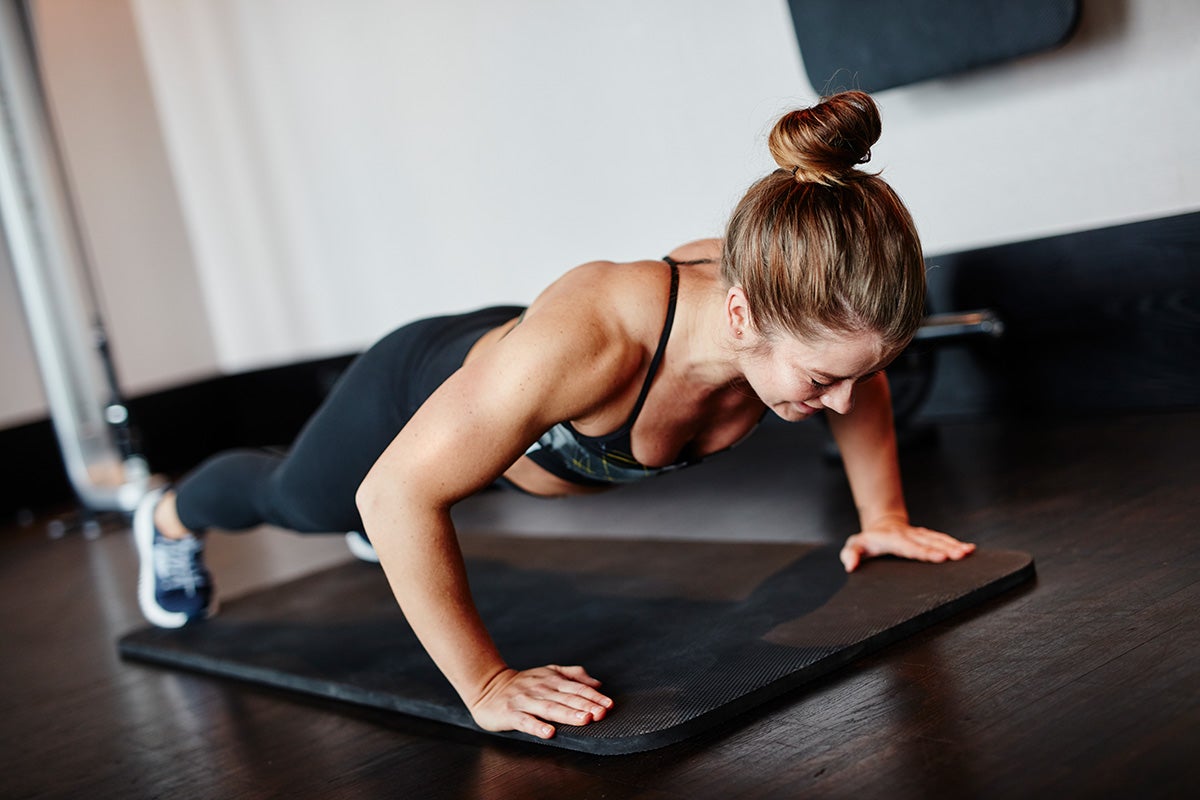
You can also do the classic push-ups as an eccentric strength exercise. To do this, get into the starting position and very slowly lower yourself toward the floor. This lowering is the eccentric phase that is so important for muscle building. You can then push yourself back up at your normal pace.
Muscles: Small and large pectoral muscle, deltoid muscle, back extensor. Doing eccentric push-ups will also help you do more “normal” push-ups.
Remember: If you still find the classic push-ups difficult, then start on your knees first. The main thing is that you perform the exercise cleanly so that you benefit from the negative repetition.
#4 Leg Press
Your usual training on the leg press is also the perfect choice to integrate into your eccentric training.
- Begin in the starting position with your feet on the plate and your legs at about a 90-degree angle at the knee.
- Now push the plate away from you, hold the weight briefly at the end of the movement, then slowly (!) bring it back toward you — this is the eccentric phase. To get more power out of your muscles, you should focus on the downward movement after pushing the weight away and extend the eccentric phase as long as possible.
Muscles: Entire glutes, hamstrings and quads, lower legs, calves.
Remember: Make sure that your knees remain stable when performing the exercise and do not collapse inwards or turn outwards. The toes and balls of your feet should point in the same direction as your knees.
If you are planning high-intensity training sessions, you can take our Creatine Powder immediately before training. It can increase physical performance* and is simply mixed with water.
#5 Bench Press
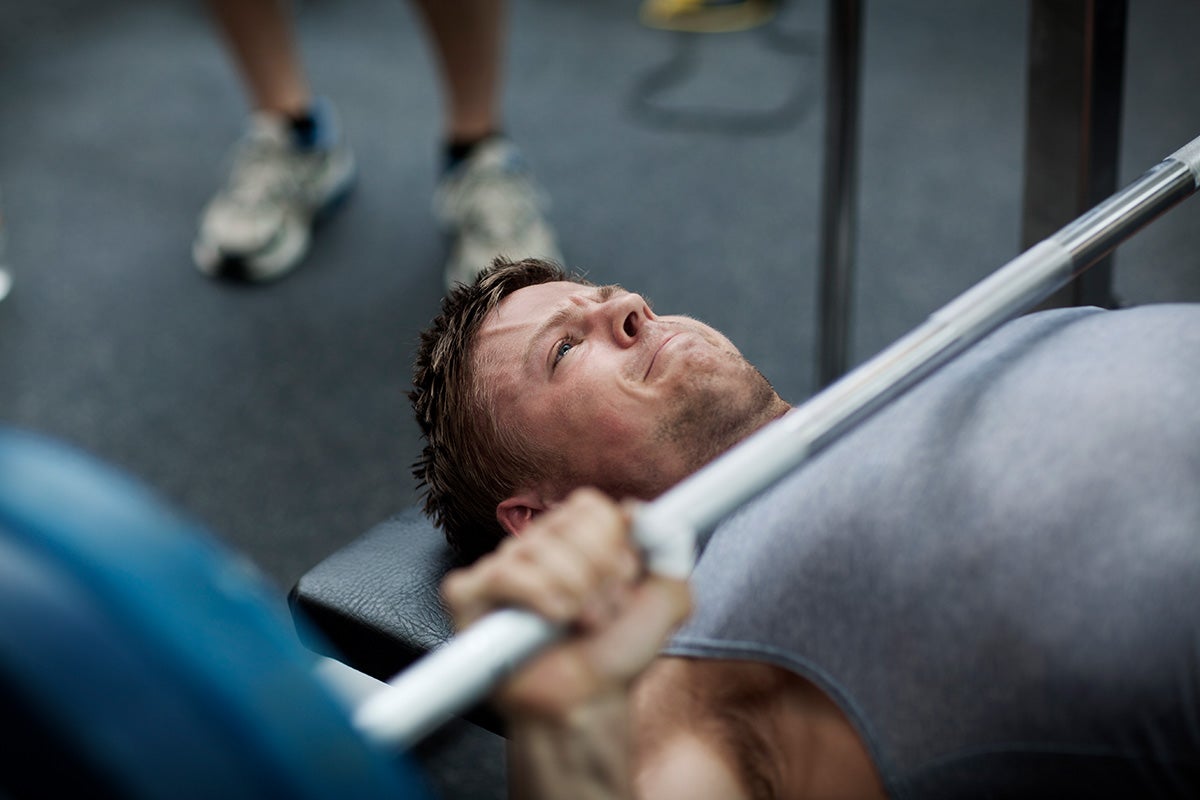
Another very efficient exercise in eccentric training is the bench press, where, you lie on a weight bench and push the weights up on a barbell. Be sure to perform the release movement much slower than the press movement to once again make the best use of the eccentric phase.
Muscles: Large pectoral muscle, anterior deltoid, triceps.
Remember: If you perform the bench press as an eccentric exercise, you should definitely get support from trainers or training partners to help you lift the barbell. This is because you lower the weight more slowly than usual, and it will be much more strenuous to lift the weight.
If you’re a gym user looking for a little variety without having to learn a completely new sport, then it’s worth doing eccentric training on a regular basis and sticking with it. This is because if you incorporate eccentric strength exercises, you’ll not only activate new muscle stimuli, but you’ll also notice how incredibly diverse your usual training can be.
More things to know from foodspring:
- Push & Pull – The Only 6 Moves Your Need to Know to Build Strength
- 7 Tricks to Improving Self-Confidence at the Gym
*Creatine increases physical performance during successive short-term, high-intensity exercise. A daily intake of 3 g of creatine has a positive effect.
Sources for this article
We at foodspring use only high-quality sources, including peer-reviewed studies, to support the facts within our articles. Read our editorial policy to learn more about how we fact-check and keep our content accurate, reliable, and trustworthy.



























